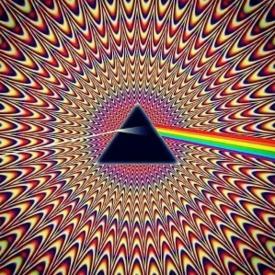Potato confusion
Replies
-
Correct me if I'm wrong, but I thought we were talking about caloric values, not the glycemic index.
Also, the livestrong one compares a cup of Instant Mashed potatoes to a baked potato. I find this hard to equate the two. I will read through the links though. Thanks.
True but the 2 are intrinsically linked. low gi foods release less sugars slower, therefore less calories, hi gi release more calories quicker so although not the same they are related.0 -
Some items here are user submitted. They won't all match. You can see on the little window whether it is user submitted information.
^^
Also, when you boil potatoes, you don't get as many nutrients, same with peeling0 -
So a higher GI food has less calories than a lower GI food?Correct me if I'm wrong, but I thought we were talking about caloric values, not the glycemic index.
Also, the livestrong one compares a cup of Instant Mashed potatoes to a baked potato. I find this hard to equate the two. I will read through the links though. Thanks.
True but the 2 are intrinsically linked. low gi foods release less sugars slower, therefore less calories, hi gi release more calories quicker so although not the same they are related.
When you reference a mashed potato,
Lets say we take 2 potatoes. Bake them equally, leave the skin on.
Then we 'mash' one of them. And eat it
Then we eat the baked potato.
How are these any different as far as calories go? Aren't we 'mashing' the baked potato with our teeth as we chew? Is this tiny amount of caloric burn the difference in the GI of these two identical foods?0 -
Holy tangent Batman!
Usually the simplest answer is the right one.
USER SUBMITTED INFO
Not mutant potatoes.0 -
^^^LOL!!!Holy tangent Batman!
Usually the simplest answer is the right one.
USER SUBMITTED INFO
Not mutant potatoes.0 -
It should be due to the way starch breaks down into material that is useable by the human body. Boiling integrates heat further into the potato and disperses better than microwaves, breaking down more of the starch; therefore, there are more calories for your body to utilize. Microwaving doesn't break down the starches as well. If it helps, think about how soft a boiled vs. microwaved potato is. Hope this helps.
This can happen with the ripeness of food too - green bananas have the starch is an indigestable form - eat them green = way less carbs hence calories0 -
Holy tangent Batman!
Usually the simplest answer is the right one.
USER SUBMITTED INFO
Not mutant potatoes.
This is my take on this thread. A couple or a few calories....maybe. But 100 calories for a same-size potato? I'm not buying it, all you scientific types. Some things are just - wrong.0 -
Can I just say - I love this thread. Thanks sciencey types for offering up your knowledge.
Speaking as a non science person - the banana example's an easy one to get. Ripe bananas taste sweeter; it's clear, from taste & experience, they have more sugar than green ones. That is real & not imagined sugar, too, a result of chemical processes. It doesn't seem crazy to understand it has a different caloric value than the green one.
Must be the same for carmelizing onions, right?0 -
So you're telling me toast has more calories than bread?0
-
So you're telling me toast has more calories than bread?
Probably fewer because there are more crumbs that fall off of toast. :laugh:0 -
I love that this is such a contentious issue. Thanks for all the responses!
My main reason for the post was because I made mashed potatoes last night and have to stay at work late tonight so took a potato into work to make a jacket potato for dinner. I always record the calorie content at home so I can weigh everything (I don't trust the 'medium size potato' measurement to provide accurate calories). When recording I noticed the big difference between the two.
But problem solved - I took my kitchen scale into work (not that I'm obsessive or anything...) and weighed the potato after microwaving it.
I can confirm that of the very similar sized potatoes, when I made mash yesterday by boiling the potato it contained 227 cals (no skin though) and just now when I microwaved the potato it contained 176 cals. So not a huge difference and it's probably down to slight differences in the sizes of the potatoes, but still surprising considering no skin boiled = more cals then with skin microwaved.0 -
I have always wondered about bread and toast.... And it's infuriating when companies label the cals on things like pasta and rice without telling you whether that's the cooked or raw value.0
-
I have always wondered about bread and toast.... And it's infuriating when companies label the cals on things like pasta and rice without telling you whether that's the cooked or raw value.
When possible measure the raw food as the moisture content skews the weight of cooked food very badly
take the toast example.
1 sliced of brown bread is about 1oz when fresh and 3/4 oz when toasted - they both have the same calorie values usually around 90-110 depending on the type of bread grains and if sugar or honey have been used in the manufacturing process.
So sorry your toast is not 60 cals it is still 90 LOL
The oxidation process of browning food does not have a signicant effect on calories either so no caramelizing onions does nothing except add some nice butter or oil to the total...nice taste though0 -
Why would that be a joke? I'm in food science, we learn about this. Potatoes technically have fewer calories raw vs. cooked because the human body can't break down those starches.
But calories aren't measured by how the body breaks them down chemically. It's measured by the amount of energy that is produced when it is on fire. It's a standard measure. I mean, in reality, calories don't exist. It's something we made up to assign an energy value to food.0 -
Some items here are user submitted. They won't all match. You can see on the little window whether it is user submitted information.
^^
Also, when you boil potatoes, you don't get as many nutrients, same with peeling
Half true. Peeling removes some nutrients. Boiling... no.0 -
There shouldn't be that many calories difference. Maybe when you boil a potato, some of the calories come out in the water. Of course it would depend on whether or not the potatoes have skin on or skin off. If you boil a potato whole with the skin on and microwave a potato with the skin on, one would think the net calories would be about the same.0
-
Bet you did not expect to start a war over starches. That's mfp for ya. lol.0
-
If you are going over or under your calories by only 100 calories, would it *really* matter? Are you eating more than one potato every single meal, every single day?
The potatos I buy say 110 calories on them. wrapped up each one in plastic. Thats what i buy, i only buy one, once in awhile & thats what i log.
If that means i go over by 100, oh well.. im sure i burn 50 calories once or twice a week cooking, or cleaning or walking to the bathroom, or to my car or folding laundry or whatever my normal household chores are that i do every day.. that i dont log.
*shrugs* its 100 calories once in awhile! Dont sweat it so much! lol
( and yes, i log every calorie that goes in my mouth!!!)0 -
Why would that be a joke? I'm in food science, we learn about this. Potatoes technically have fewer calories raw vs. cooked because the human body can't break down those starches.
But calories aren't measured by how the body breaks them down chemically. It's measured by the amount of energy that is produced when it is on fire. It's a standard measure. I mean, in reality, calories don't exist. It's something we made up to assign an energy value to food.
This is why some people rely on the glycemic index of the food they consume this is one way to get a indication if the food is going to have a fast or slow effect on your blood sugar. (Not quite the same thing I know)
Essentially you are correct calories are a scientific measurement but we have no other reliable way of 'seeing' how a particular food get used by each person. The people on high protein diets really do not care about how many calories they eat because their bodies can not absorb all the fat and protein they are eating.0 -
If you want a very detailed article "The Energetic Significance of Cooking" in the Journal of Human Evolution is a good place to start.
RossChip gave a good example of how this happen. Starch digestibility increases with cooking because starches break down into simpler sugars that the human body can utilize. A lot of plant matter is made up of lignin, which humans cannot digest, but ruminant animals can due to their digestive enzymes. Cooking breaks down some lignin and other long-chain polysaccharides (starches). Some, however, do not fully break down, which is where fiber comes from. Fiber is generally composed of lignin, cellulose, and hemicellulose.
Biologist here. Confirming the above food scientist.
This is why you can eat a crap ton of cals on a raw diet and lose weight. The cals cannot be utilized. The invention of flame is why we evolved our big calorie consuming brains! This girl is smart. Like me. 0
0 -
Maybe we should just forget about eating potatoes. :flowerforyou:0
-
It's a potato. Not a nuclear bomb. Nothing to start a war over.0
-
the same goes for pastas... the more well cooked a pasta is for you, the less healthy it is.
bethany has a valid point
although--- not sure if it's a HUGE calorie difference as the OP is stating0 -
Potatoes aren't really THAT healthy so maybe just eat them less and don't worry about it so much? haha0
-
The people on high protein diets really do not care about how many calories they eat because their bodies can not absorb all the fat and protein they are eating.
You've completely lost me. I eat 100+ grams of protein a day... are you saying that my body isn't using all that protein? Where is it going then?
I'm not even sure what this has to do with the point that I made that caloric values are estimated in general.0 -
To me, there is never a question. The potatoes always go in my mouth.0
-
Maybe we should just forget about eating potatoes. :flowerforyou:
Go ahead if you choose. Potatoes, rice, and pasta are staples when you have a tiny food budget. (not to mention they are all yummy and very versatile!) :flowerforyou:0 -
The people on high protein diets really do not care about how many calories they eat because their bodies can not absorb all the fat and protein they are eating.
You've completely lost me. I eat 100+ grams of protein a day... are you saying that my body isn't using all that protein? Where is it going then?
I'm not even sure what this has to do with the point that I made that caloric values are estimated in general.
I did say you were correct...
but my point was there is much more to the story about how we 'use' the food we eat
High Protein very low carb diets are different to just eating a lot of protein, these dieter put there bodies in to metobolic state called ketosis when they burn fat for day to day energy requirements instead of carbs...
If you are interested this is a good overview
http://www.webmd.com/a-to-z-guides/high-protein-low-carbohydrate-diets0 -
The people on high protein diets really do not care about how many calories they eat because their bodies can not absorb all the fat and protein they are eating.
You've completely lost me. I eat 100+ grams of protein a day... are you saying that my body isn't using all that protein? Where is it going then?
I'm not even sure what this has to do with the point that I made that caloric values are estimated in general.
I did say you were correct...
but my point was there is much more to the story about how we 'use' the food we eat
High Protein very low carb diets are different to just eating a lot of protein, these dieter put there bodies in to metobolic state called ketosis when they burn fat for day to day energy requirements instead of carbs...
If you are interested this is a good overview
http://www.webmd.com/a-to-z-guides/high-protein-low-carbohydrate-diets
I'm familiar with keto diets. I don't support them. I'm just not clear how keto diets are relevant to whether or not starches, namely potatoes, have more calories when you cook them.0 -
If I were to start a rock band, I would call it Potato Confusion. And it would be epic.0
This discussion has been closed.
Categories
- All Categories
- 1.4M Health, Wellness and Goals
- 398.4K Introduce Yourself
- 44.7K Getting Started
- 261K Health and Weight Loss
- 176.4K Food and Nutrition
- 47.7K Recipes
- 233K Fitness and Exercise
- 462 Sleep, Mindfulness and Overall Wellness
- 6.5K Goal: Maintaining Weight
- 8.7K Goal: Gaining Weight and Body Building
- 153.5K Motivation and Support
- 8.4K Challenges
- 1.4K Debate Club
- 96.5K Chit-Chat
- 2.6K Fun and Games
- 4.7K MyFitnessPal Information
- 17 News and Announcements
- 21 MyFitnessPal Academy
- 1.5K Feature Suggestions and Ideas
- 3.2K MyFitnessPal Tech Support Questions


















